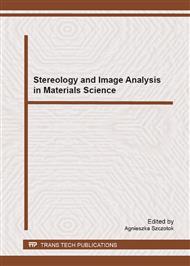[1]
A. Zieliński, Hydrogen degradation of non-ferrous metals and their alloys (in Polish), Gdańskie Towarzystwo Naukowe, Gdańsk, 1999.
Google Scholar
[2]
M. Sozańska, K. Kłyk-Spyra, Investigation of hydrogen induced cracking in 2205 duplex stainless steel in wet H2S environments after isothermal treatment at 675°C, 750°C and 900°C, Mater Charact 56 (2006) 399-404.
DOI: 10.1016/j.matchar.2005.11.024
Google Scholar
[3]
F.H. Froes, D. Eliezer, O.N. Senkov, J.L. Quazi, Beneficial effect as a temporary alloying element in titanium alloys: An overview, in N.R. Moody, A.W. Thompson, R.E. Ricker, G.W. Was and R.H. Jones (Eds.), Hydrogen Effect on Materials Behavior and Corrosion Deformation Interactions, TMS (The Minerals, Metals & Materials Society), 2003, pp.301-314.
Google Scholar
[4]
J.L. Qazi, J. Rahim, O.N. Senkov, S.N. Patankar, F.H. Froes, Phase transformations in the Ti-6Al-4V – hydrogen system, in N.R. Moody, A.W. Thompson, R.E. Ricker, G.W. Was and R.H. Jones (Eds.), Hydrogen Effect on Materials Behavior and Corrosion Deformation Interactions, TMS (The Minerals, Metals & Materials Society), 2003, pp.337-344.
DOI: 10.4028/www.scientific.net/kem.230-232.344
Google Scholar
[5]
O.N. Senkov, B.C Chakoumakos, J.J Jonas, F.H Froes, Effect of temperature and hydrogen concentration on the lattice parameter of beta titanium, Mater Res Bull 36 (2001) 1431-1440.
DOI: 10.1016/s0025-5408(01)00604-3
Google Scholar
[6]
O.A. Kaibyshev, Grain refinement in commercial alloys due to high plastic deformation and phase transformations, J Mater Process Tech, 117 (2001) 300-306.
DOI: 10.1016/s0924-0136(01)00784-1
Google Scholar
[7]
A. Szkliniarz, W. Szkliniarz, Effect of cyclic heat treatment parameters on the grain refinement of Ti-48Al-2Cr-2Nb alloy, Mater Charact 60 (2009) 1158-1162.
DOI: 10.1016/j.matchar.2009.03.008
Google Scholar
[8]
W. Szkliniarz, J. Chrapoński, A. Kościelna, B. Serek, Substructure of titanium alloys after cyclic heat treatment, Mater Chem Phys, 81/2-3 (2003) 538-541.
DOI: 10.1016/s0254-0584(03)00069-5
Google Scholar
[9]
J. Szala, METilo Image analysis software, Silesian University of Technology, Katowice, 2010.
Google Scholar
[10]
Ł. Trząski, Master's thesis, Silesian University of Technology, Katowice, 2012.
Google Scholar
[11]
J. Cwajna J., Factors affecting the accuracy and precision of quantitative description of materials microstructure, Solid State Phenom 101-102 (2005) 297-306.
DOI: 10.4028/www.scientific.net/ssp.101-102.297
Google Scholar
[12]
J. Cwajna J.: Complex procedures of quantitative description of materials microstructure. Solid State Phenom 101-102 (2005) 287-296.
DOI: 10.4028/www.scientific.net/ssp.101-102.287
Google Scholar


